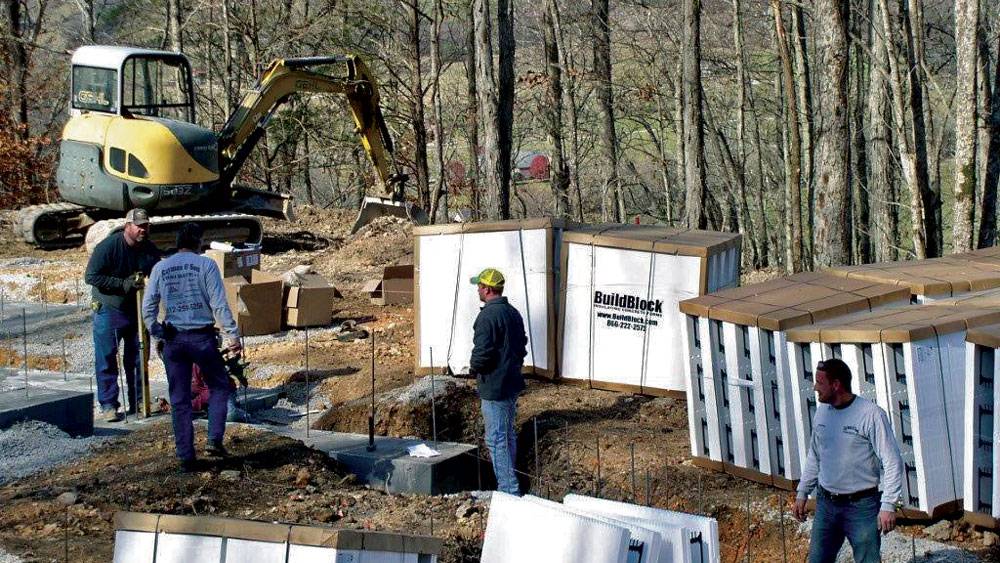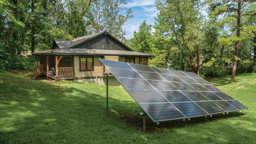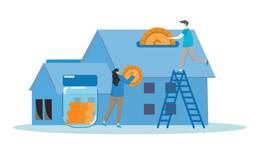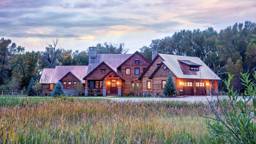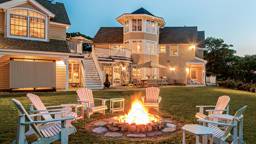Heavy Timber Truss & Frame photos
In a world where “efficiency” seems to be nothing more than a building buzz word, timber homes truly embody what it means to be effective when it comes to creating a comfortable and cost-conscious home that’s mindful of the environment. And that efficient and energy-minded design starts with the enclosure system. “I often describe a timber home by saying it’s like throwing a blanket over a fine piece of furniture,” explains Jonathan Orpin, head of the architectural team at New Energy Works Timberframers that has offices in both New York and Oregon.
“The furniture, much like the timber frame, is nice and cozy under that warm blanket.” Jeremy Bonin, principal partner and lead architect at Bonin Architects & Associates in New London, New Hampshire, explains this concept further: “When I meet with new clients, I typically describe a timber frame as the visible skeleton of a building. I ask them to visualize a 12-foot-long wall; with conventional construction that wall has ten 2-by-6-inch studs, each acting as a small post. The insulation is then incorporated between each of the structural members, allowing for thermal bridging at each stud and lowering the cumulative R-value of the wall,” explains Bonin. “In a timber home, on the other hand, large SIPs (structural insulated panels) are applied to the exterior of the frame, almost eliminating thermal bridging and providing a more airtight structure.”
While SIPs are just one of the insulation methods available today, their advantages are noteworthy and contribute to the overall long-term quality of a home. Thanks to the uninterrupted SIP seal, the flow of air and heat can be controlled more easily, resulting in lower energy bills and better filtration of allergens and excess moisture. Plus, they help you enjoy your home’s true interior beauty. “Those SIPs wrap the frame from the outside in, so you not only achieve a level of extraordinary efficiency, but you get to enjoy the beauty of the timber structure inside the home,” says Bruce Bode, partner at Heavy Timber Truss & Frame in Sissonville, West Virginia.
SIPs: The Facts
Although individual products from manufacturers vary, today’s SIPs all have a solid core of insulation sandwiched between two layers of oriented strand board (OSB). The core often is polystyrene, extruded polystyrene, Neopor or polyurethane — the same durable yet lightweight foams used in bicycle and motorcycle helmets and egg cartons. Expanded polystyrene (EPS) foam, a material that’s grown in popularity in recent years, is a recyclable alternative that takes less energy to produce than other SIP cores. SIPs are available in a variety of thicknesses and sizes ranging from 2 to 12 inches thick and in sizes from the standard 4-by-8 to 8-by-24 feet. Panels generally weigh less than 4 pounds per square foot, making them light enough to install by hand.
A crane often is used for larger roof panels or for lifting bundles of panels on the job site. SIPs cost 2 to 5 percent more than materials used in conventional framing, but if the home is designed with SIP application in mind, you actually can save money and minimize onsite waste by making the most efficient use of each panel. SIP homes require up to 50 percent less energy to heat and cool than stick-framed homes, and it typically takes less than 5 years for that efficiency to offset the original price. SIPs arrive at your construction pre-cut and ready for installation to create your timber home’s walls and roofs. Once the SIPs are installed, you can apply virtually any finish — stucco, stone, brick, clapboard — to polish off the sides of your home (both inside and out) and roof. Discuss the options with different companies to get a clear picture of the advantages and drawbacks of each material specific to your design and geographic location.
Benefits of SIPs
SIPs are growing in popularity for all types of homes, but especially structures that are aiming for maximum efficiency and sustainability. Here’s why. They go up quickly and easily. Depending upon the size and design of a home, it can be enclosed with SIPs within days or even hours. This saves money on labor, insurance and financing, as well as energy on the job site. They’re flexible. SIPs can arrive at the home site in bundles of large generic panels that builders cut to fit the home’s specific floor plan. Or panels can be cut exactly to the home’s design at the factory by the manufacturer and then numbered for easy installation, which results in less wasted materials and resources. They’re energy-efficient.
This material cuts heating and cooling costs by as much as 50 percent over products used for conventional “stick” construction. Even where wall thickness is the same, SIPs outperform stick framing on whole-wall energy performance by 40 to 60 percent, according to a study by Oak Ridge National Laboratory. They’re soundproof. SIPs block sound like few other materials — a big perk, especially in bedrooms, dens, home offices and media rooms. They’re environmentally friendly. Components that comprise SIPs come from renewable resources. The insulation is a form of plastic, and oriented strand board (OSB) is made from fast-growing trees and shrubs once considered waste by the lumber industry.
ICFs: The Facts
While SIPs are the standard enclosure system used in most of today’s timber frames, there’s another type of system that will take your timber home to the next level — and it can be used in conjuction with SIPs. Insulated concrete forms (or ICFs) are solid blocks, made from two pieces of insulation held together with a series of fasteners. Stacked together like Legos, the ICF blocks are hollow, making it easy to cut and layer them together to shape a home’s foundation or exterior walls. Once they are properly positioned, they are reinforced with steel rebar and filled with concrete to set them in place. After the concrete sets, the foam remains and provides insulation on both the exterior of your wall or foundation and the interior of your home.
Benefits of ICFs
“Historically, a stud wall with a vapor barrier, insulation and then drywall has been the most common method for insulating the lower level of a home,” says Bode. “The ICF system, however, plays perfectly into an energy-efficient whole-house envelope, because it provides a thermal break between the exterior environment and the conditioned space inside your home. Plus, the forms are easy to use and offer an R-22 rating.”
Here are the basic benefits of ICFs:
They save energy. Most ICFs use 2.5-inch-thick sheets of EPS to form the blocks’ outer walls. The resulting five inches provides an R-20 rating versus the typical stud wall that delivers an R-4 to R-13 rating, depending on batt thickness. They reduce air infiltration. Between the EPS and the solid cement, there is no air infiltration in an ICF. Further, there are no thermal short circuits through wood connections.
They increase comfort in your home. With less air infiltration and no thermal short cuts, your home has a more even temperature from floor to floor, meaning virtually no cold or hot spots. They boost indoor air quality. Reduced air infiltration also means less dust, pollen and other pollutants. That leads to a reduction in allergies, hay fever and asthma.





